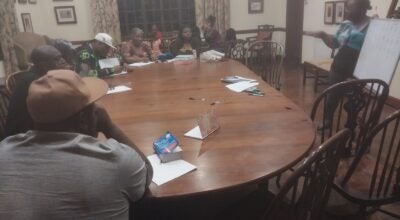Consumer Qs: Oct. 26, 2016
Published 8:30 pm Wednesday, October 26, 2016
Q: What is gomasio and how is it used?
A: Gomasio, also spelled gomashio, is a dry condiment, made from unhulled sesame seeds and salt. It is often used in Japanese cuisine but can be used on many foods. We asked Mandy and Mike O’Shea of 3 Porch Farm (www.3porchfarm.com) in Comer, Georgia, for some suggestions since they produce their own gomasio made from toasted organic black and white sesame seeds, shiitake mushrooms, sustainable seaweed and sea salt. They suggested people try it on salads, pizza, vegetables, rice, eggs, soups (especially tomato soup), sushi, popcorn, toasted sourdough bread drizzled with olive oil, avocadoes and tuna-salad sandwiches. They said it is quite versatile and they are constantly told of all sorts of uses from other folks have tried it. We really liked it on fresh tomatoes.
Q: What are some flowers that will attract hummingbirds and that will grow in shady areas?
A: Here are some flowering plants that will tolerate full or partial shade that will also attract hummingbirds: red buckeye (Aesculus pavia), Eastern columbine (Aquilegia canadensis), cardinal flower (Lobelia cardinalis) hosta, spigelia (Spigelia marilandica), redbud/Judas tree (Cercis canadensis), jewelweed (Impatiens capensis), woodland phlox (Phlox divaricata), scarlet monarda (Monarda didyma), copper iris (Iris fulva) and fire pink (Silene virginica).
Native azaleas and rhododendrons such as plumleaf azalea (Rhododendron prunifolium), pinxterbloom azalea (Rhododendron periclymenoides), flame azalea (Rhododendron calendulaceum), Oconee azalea (Rhododendron flammeum), Florida flame azalea (Rhododendron austrinum), Piedmont azalea (Rhododendron canescens), rosebay rhododendron (Rhododendron maximum) and Catawba rhododendron (Rhododendron catawbiense) are good choices. So are varieties of Asian azaleas and rhododendrons.
Torenia and impatiens/sultana are two commonly available annuals that will work. Choose the deep purple-blue or pink varieties of torenia and red, scarlet or pink varieties of impatiens. And of course, select single, not double varieties. Begonias are not generally considered a hummingbird favorite, but they will visit them, and red or pink varieties may lure hummers to shadier parts of your garden.
Fuchsias are a hummingbird favorite but can peter out in summer’s heat. Try one in a hanging basket to see how it works for you.
Visit your local garden center and talk to a horticulturist there to find out the exact needs of each plant. Some of these need some sun to perform best. Describe your area and its conditions in order to help the horticulturist aid you in deciding what is best.
Of course, the more you have, the better your chances of having hummingbirds visit. And a hummingbird feeder will work in the shadiest of gardens.




